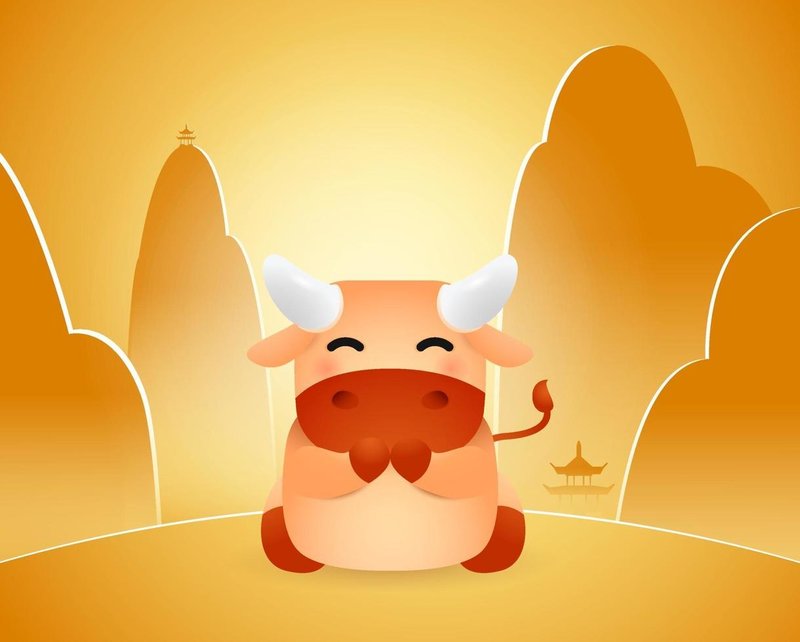
Imagine sitting around a warm fire, listening to stories passed down through generations. In many communities worldwide, the ox has been a central figure—guiding lives, shaping rituals, and even influencing zodiac signs. It’s fascinating how a single animal can carry different meanings depending on where you are in the world. Let’s delve into the world of folklore and cultural significance, exploring how this magnificent animal has been portrayed throughout history.
The Ox in Asian Mythology
In many Asian cultures, the ox is intertwined with mythology and significant beliefs. For instance, in Chinese culture, the ox holds a prominent spot in the Chinese zodiac. Each year corresponds to a different animal, and the Year of the Ox symbolizes diligence and dependability. People born in this year are often viewed as hard workers, known for their patience and determination, much like the ox in the fields.
In addition to its zodiac status, the ox also features in popular folklore stories. One such tale is that of the Cowherd and the Weaver Girl, a romantic story symbolizing the annual reunion of lovers separated by the Milky Way. The ox serves as a bridge between their worlds, emphasizing themes of love, perseverance, and the beauty of reunion. This highlights the ox’s role not just as a laborer but as a vital player in the stories that shape cultural values.
Oxen in African Traditions
African cultures also hold the ox in high esteem, often associating it with wealth and status. In many communities, owning oxen is a sign of prosperity. They’re not just livestock but symbols of a family’s success and a means of livelihood. In certain regions, the ox plays a critical role in rituals and ceremonies, such as weddings and funerals, where they may be sacrificed to honor ancestors or to bring blessings upon the community.
Beyond their practical role, oxen are often celebrated in folklore. Various tales depict them as wise creatures who aid humans in their struggles. For example, stories tell of an ox helping a farmer through tough seasons, reinforcing the bond between humans and animals. Here, the ox represents not just physical strength but also the vital partnership between nature and human perseverance.
Symbolism of the Ox in Native American Lore
In Native American cultures, the ox isn’t as commonly featured as in Asian or African folklore, but it’s still significant. It symbolizes stability and strength, often appearing in creation myths. Some tribes view the ox as a guide through life’s challenges, emphasizing its resilience and ability to thrive in difficult conditions.
Moreover, certain tribes might use the ox’s hide in crafts and rituals, showcasing its importance in daily life. The animal’s strength is a reminder of the power found in unity and community, as tribes work collectively to support one another—much like a yoked pair of oxen working together in the fields.
Medieval European Folklore
In medieval Europe, the ox frequently appeared in fables and morals, often embodying qualities of hard work and loyalty. Think of the familiar tale *The Town Mouse and the Country Mouse*, where the ox serves as a metaphor for farming life—depicting the values of simplicity and diligence. Stories often showed the ox as a hardworking animal, a fundamental part of agricultural life, and a symbol of reliability.
Art and literature from this era also utilized the ox to convey messages about virtue and labor. In many paintings and texts, the ox is shown in fields, tirelessly working to produce food. This reflects a societal admiration for the agrarian lifestyle, promoting the idea that hard work leads to rewards, much like the ox laboring in the fields.
Modern Representations of the Ox
Today, the representation of the ox persists in various forms, appearing in literature, festivals, and art. Festivals around the Lunar New Year celebrate the Year of the Ox with parades featuring oxen, traditional dances, and cultural performances. These modern celebrations honor the values associated with the ox—strength, perseverance, and dedication—while also fostering a sense of community.
In literature, authors often use the ox as a character that embodies strength and wisdom. Books aimed at children frequently feature oxen to teach valuable lessons about hard work and friendship. Even in movies, you might see a fictional character based on the sturdy nature of the ox, demonstrating courage and loyalty.
The Ox Across Cultures: A Comparative Look
When comparing the portrayal of the ox across cultures, a fascinating pattern emerges. Regardless of location or historical context, the ox is primarily viewed as a symbol of strength, endurance, and cooperation. In many narratives, whether it’s a story from Africa or Asia, the ox is depicted as a hardworking companion to humans, showcasing themes of loyalty and resilience.
Moreover, the characteristics attributed to the ox often mirror the values of the cultures that celebrate it. For instance, in societies that prioritize agriculture, the ox is glorified for its role in farming. In cultures that value perseverance and hard work, the ox becomes a metaphor for those traits. This cohesion across various cultures highlights the universal appreciation for the ox as a vital part of life and survival.
In summary, the ox is more than just a laborer in fields; it’s a symbol rich with cultural meaning and significance. From ancient tales in Asia to modern celebrations worldwide, this animal has woven its way into the fabric of various cultures. The stories told about the ox remind us of the values we hold dear—hard work, loyalty, and resilience.
As we explore how the ox is represented in culture and folklore, it becomes clear that this creature stands as a testament to the human experience, reflecting our struggles, triumphs, and enduring connection to nature. So, next time you see an ox, remember it’s not just an animal; it’s a symbol of strength that has shaped our stories and cultures throughout history.

